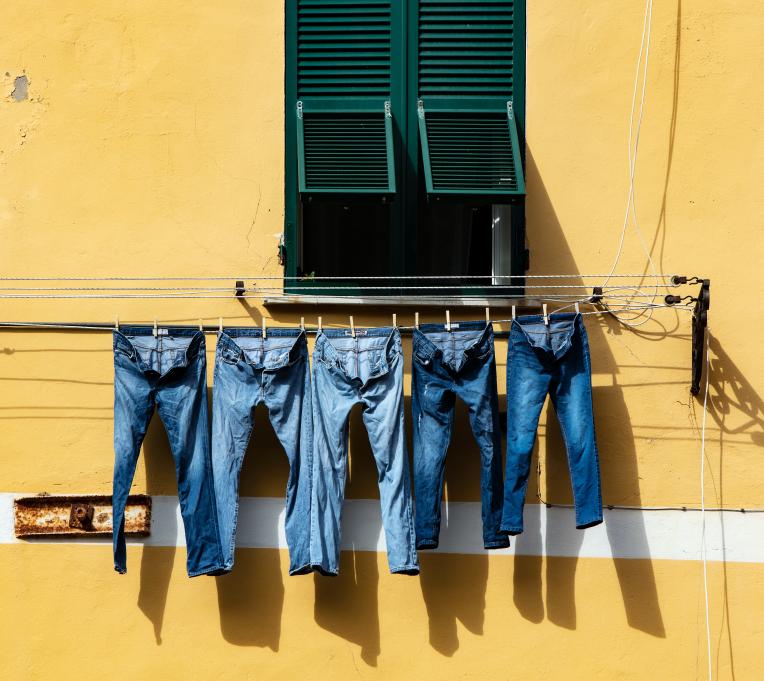
We’ve all been there. Friday night is fast approaching, you and your mates are booked into some fancy bar with neon lights, loud music and drinks that cost the same as your left kidney. You open up your wardrobe which is bursting at the seams and you think “Ugh, I have nothing to wear.” So, you pick up your phone, go to your favourite clothing outlet and pick out that lush top that you’ve had your eye on all week, select “next day” delivery, and sit eagerly in front of the letter box waiting for that rush of serotonin that you get when you spot that package on your doormat. You then wear the top one time and chuck it in the aforementioned wardrobe of long-lost clothing, never to be worn again.
Ok, maybe I’m being a little dramatic, but there’s no denying that many of us have bought something from a site like PrettyLittleThing because it was an absolute bargain, only to wear it once and then buy something else and repeat this cycle indefinitely. And why not? It’s so easy and it doesn’t hurt anyone, right? Wrong.
The “Fast Fashion” industry is one of the most financially lucrative industries in today’s world. Parent company BooHoo, who own PrettyLittleThing among a plethora of other household clothing brands, saw their revenue grow by a whopping 41% throughout 2020, reaching £1.74bn. Despite being extremely profitable however, this all comes at a much greater cost. The entire process from manufacture, to delivery, to discarding causes massive environmental damage.
It can take 1,500 litres of water to produce the cotton needed to make one single T-shirt. A pair of jeans? 6,800 litres. In fact, global textile production uses 93 Trillion litres of water annually. Then there’s greenhouse gas emissions. In 2015, global textiles production produced 1.2 billion tonnes of CO2. And this is all just in production, this doesn’t even include the microfibres and pollutants that are released into the oceans, and the tonnes and tonnes of non-biodegradable clothing just sitting in landfill. Pretty sickening isn’t it?
This can all make for very grim reading and could make you feel hopeless, but there are plenty of ways that you can personally influence and drive the much-needed change to the fashion industry.
Reduce Demand
The first way is quite simply to buy less. Purchase clothing when it is more of a necessity. I’m not asking you to wear the same pants every day for a month (seriously don’t), but to just be conscious of whether or not you really need that new top. If we all cut down on the volume of clothing that we buy, this will reduce the enormous demand and slow the negative impacts on the planet.
Buy Smart, Not Cheap
Another great way to combat the damage caused by big Fast Fashion brands is to switch to clothing brands that use sustainable materials and practices. One prime example is the brand “Afends” who have started their Hemp Revolution campaign to encourage the use of Hemp in clothing manufacturing. Hemp requires significantly less water to cultivate and actually produces a much higher fibre yield per acre. It also supplies its own nutrients to the soil, which negates the need for pesticides, insecticides, and other toxic chemicals for it to grow. It can even reverse the damage caused to the world’s atmosphere, as Hemp consumes four times as much CO2 as trees do.
Other brands, like “Ensō” release their clothes in small, limited edition Pods and mainly utilise pre-orders to gauge demand. This means they only manufacture what they need to and avoid over-production and waste materials. Ensō also make all of their clothing from sustainable materials like organic cotton, which emits up to 46% less greenhouse gas than non-organic cotton. They even sell swimwear that is made from regenerated waste nylon from landfills and oceans around the world.
Wash Less
By only washing your clothes when they need to be washed and not just after every wear can significantly reduce your environmental impact. One load of washing uses on average 40 gallons of water. One load of drying uses 5 times more energy than washing. In fact, if you skip the ironing and line-dry your washing, you can cut your carbon footprint down by 33%.
Don’t Chuck
One final step that you can take to help fight Fast Fashion is to dispose of unwanted clothing in a sustainable manner. This can either be taking any old clothing to fabric recycling collection points, selling your unwanted items on platforms like Depop to find them a new home, or even donating them to a charity shop. All of these methods avoid the eventuality of your discarded clothing ending up in a landfill or in the ocean where it will not biodegrade and potentially release microfibres and other harmful substances into the environment.
Whilst all of these methods are great ways to slow the effects of climate change, there is still a huge amount of responsibility on global fashion brands to assess their practices and implement changes for the better. But if more and more young people switch to more sustainable options, these big brands will be forced to change in order to keep up and survive. We must all become much more aware of our consumerist nature and start to learn to live more within our means.





